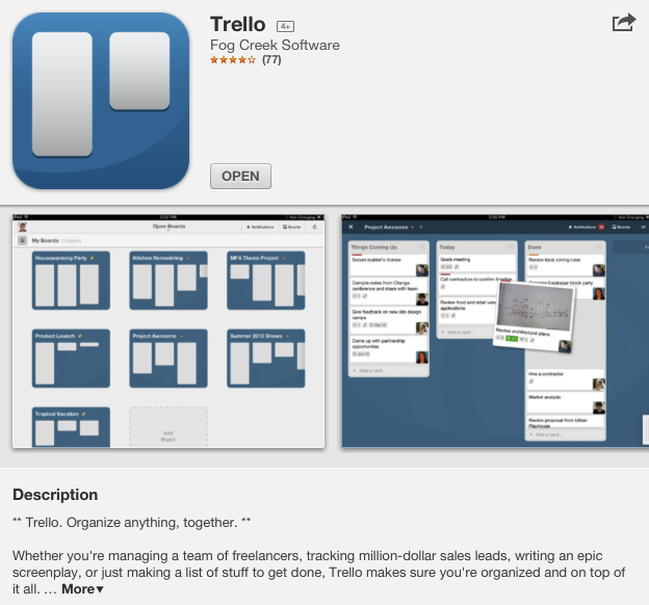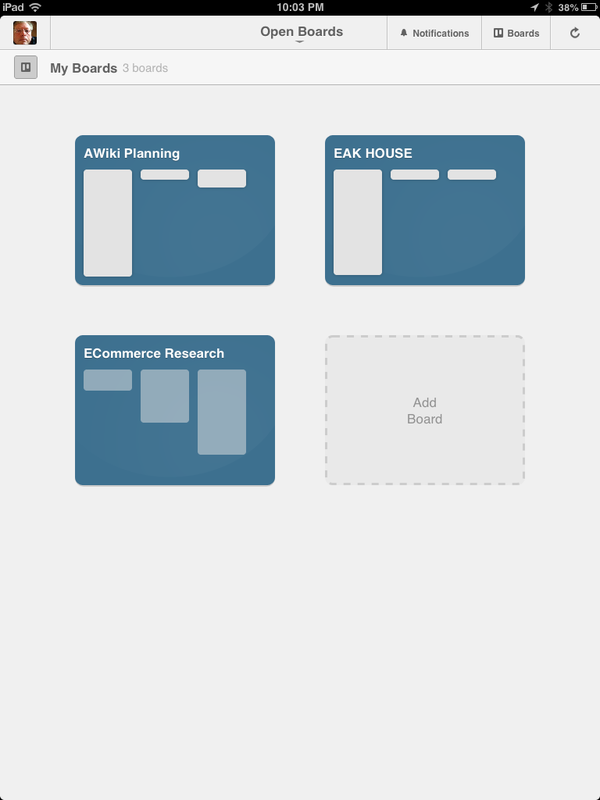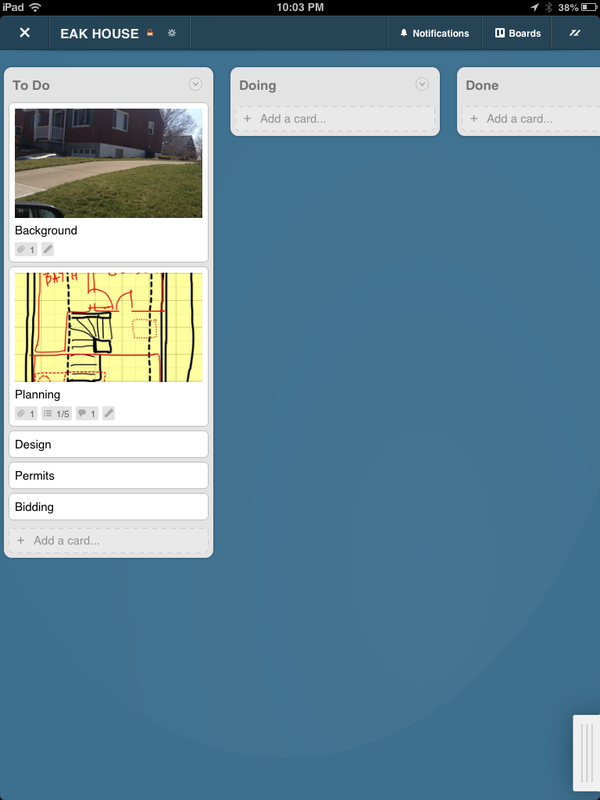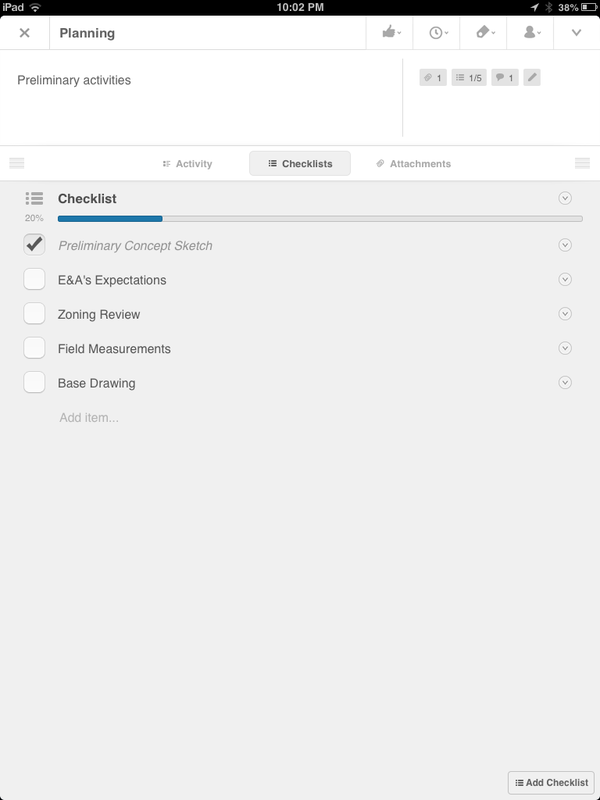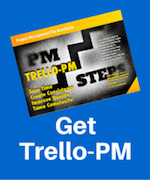|
I love checklists and tools that help you manage your work. Trello I love checklists and tools that help you manage your workload. I feel a good tool helps you “punch above your weight” by keeping you organized, focused and productive. I think one of the strongest tools like this that you can find is Trello. I use it every day. The concept behind Trello is a marker board on which you track your project planning, research, tasks, issues, etc. You would likely have a board for each project - architectural or otherwise. The board contains lists on which you plan your work. You can add as many lists as you want/need. The lists are made up of cards. Again, as many as you want. I could see the cards having phase names like schematics, design development, etc. You might have other cards that span phases for things like building code, zoning, specs, cost estimate, special permits, etc. So far this isn't earth shattering stuff. The real magic lies “inside” these cards. This inside-card view lets you view activity on the card, add comments, create multiple checklists, write a description, add attachments (generous limits), assign people to the work, and more. This is very powerful stuff, especially the collaboration aspect which equals what you can do with Basecamp or Evernote - only free. Some of the features that make Trello worth a look are:
There are several other helpful features, like automation, that you will want to use once you are up to speed, which won't be long. Try out Trello. Get an account. Then visit this public board, Post Construction, that I built to track Close Out and Post Construction issues. When you are viewing the board, copy it to your account and customize it to your methods. Trello is a surprisingly powerful and feature-rich app. I think Atlassian has a real winner. Since I originally wrote this, I have developed my thoughts on using Trello™ into an e-book describing the process in detail. See a SAMPLE.
Comments are closed.
|
x
Archives
February 2024
Categories
All
|
Architekwiki | Architect's Resource | Greater Cincinnati
© 2012-2022 Architekwiki
© 2012-2022 Architekwiki

